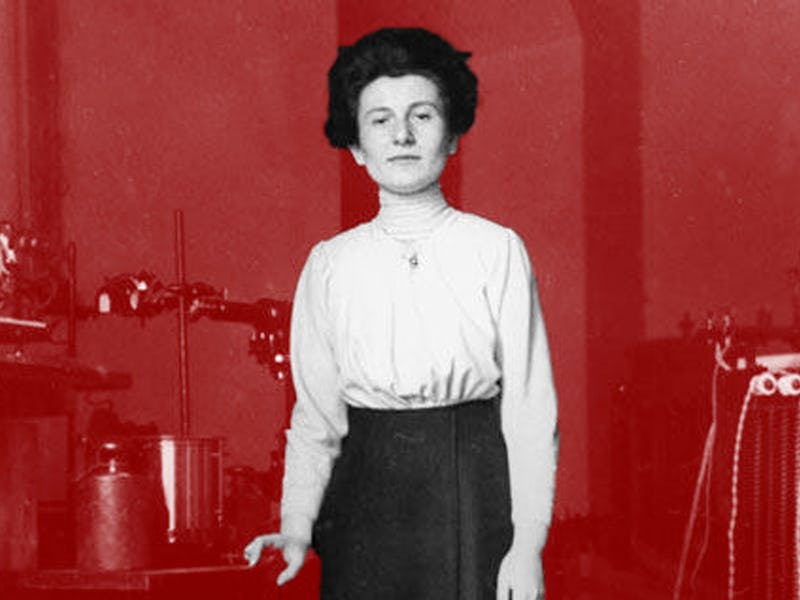Hedwig Kohn, Physicist: Excluded by Nazis and Men, She Championed Women in Science
Exiled from Nazi Germany, Kohn taught female students in America for decades.

The German physicist Hedwig Kohn was celebrated with a Google Doodle on Friday, which would have been her 132nd birthday. Born to a German-Jewish family in the city of Breslau (now Wrocław, Poland), Kohn became the second woman ever to enter Breslau University’s physics department in 1907, and the third woman to become qualified to teach physics in a German university, a credential mostly reserved for men.
Kohn went down in the science history books as a devoted scholar of light, which is why she’s depicted in the Google Doodle studying the colors of light through a prism. But she is also remembered as a woman who overcame institutional gender equality throughout her life, both on her own and with the help of other women, returning the favor to the other female scientists she supported throughout her lifetime.
Early STEM Education
Women had only been allowed to pursue higher education in Germany for five years when Kohn received her Ph.D. in physics in 1913. In an 1962 interview with the American Institute of Physics, Kohn said that her early science education would have been insufficient had it not been for the efforts of her and her young female friends to improve their own situation by bringing in a well-respected science teacher from another school.
The interviewer, Thomas S. Kuhn (noting that Kohn’s interview was brief because she didn’t like being recorded), told this story:
The man brought to her own school to teach science was very bad, unfortunately, because it was very hard to get anyone to go to a girls’ school for this purpose. As a result, the ten girls who took the matriculation examinations with her, all feeling deficient with respect to the science examination, marched themselves over to the well-known teacher from the Konig-Wilhelm Gymnasium and arranged to have special instruction from him. She too found him a considerable source of inspiration.
Journey Out of Germany
Breslau University, now the University of Wrocław, where Kohn became the third woman to gain the necessary qualification to teach physics.
Kohn taught at Breslau University’s physics department through World War I, ultimately guiding the research of eight doctoral students. Suddenly, she was dismissed in 1933, when new Nazi regulations prohibited Jews from working in government. She hid for some time in the back of the university’s physics institute, according to the Jewish Women’s Archive, but after the devastation of Kristallnacht on November 9, 1938, it was clear Kohn had to leave the country.
This was no easy feat. Although she was a talented physicist, she was young and female and had not received any job offers abroad. What she had were allies, many of them women. They included the International Federation of University Women; the Society for the Protection of Science and Learning (a group that helped Nazi refugee academics find positions abroad); one of her doctoral advisers, Rudolf Ladenburg; the female physicists Lise Meitner and Hertha Sponer (the two Germans who were qualified to teach before Kohn); and the American Association of University Women.
This GIF shows the design process that went into the Google Doodle — created by artist Carolin Löbbert — honoring Hedwig Kohn.
These people worked together tirelessly to finally secure Kohn three consecutive teaching positions at women’s colleges throughout the US, which earned her a visa to get out of Nazi Germany. They saved her life, whereas her only brother, Kurt, was killed by the Nazi regime in November 1941.
Her Career in America
Kohn’s career in the US took her to the Women’s College of the University of North Carolina, Sweetbriar College, and Wellesley College, where she taught physics to scores of female scholars.
During her time at Wellesley College, beginning in 1942, she had a profound effect on a young student named Betsy Ancker-Johnson, who went on to become a highly regarded plasma physicist. In an interview with the American Institute of Physics, Ancker-Johnson described her friendship with Kohn, who happened to share her dormitory building.
Anyway, she was a remarkable woman who was a great influence on me. I was taking freshman physics, of course, and had met her, because she dined in the same place we did, and she was very friendly. She had a high, squeaky voice and when she knew I was taking physics she invited me, if I had problems, “Knock on the door. I’ll be glad to talk to you.”
When she retired from her professorship in 1952, Sponer, who was working at Duke University, helped Kohn get a position as a research associate. She set up a flame spectroscopy lab where she continued to work, almost until her death in 1964.
Upon visiting Duke, Ancker-Johnson said “she was enjoying her retirement. She had a laboratory. She was happily engaged and was able to be supportive to students, and she enjoyed that very much.”